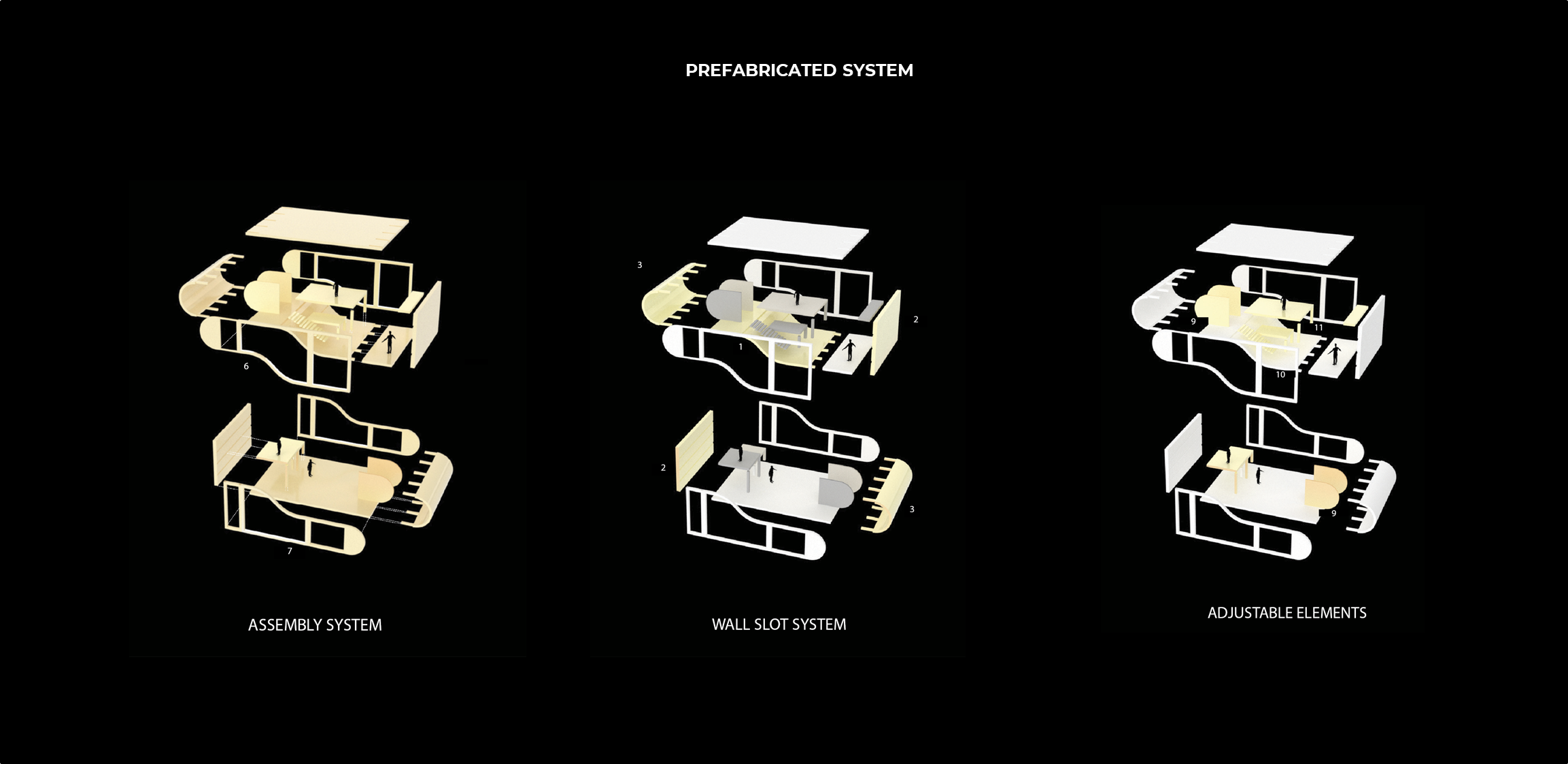ABSTRACT
2050 INHABITANT STATEGIES
While accurately predicting the state of mental health in the year 2050 is challenging, various indicators suggest a potential decline in the overall well-being of the population. This trend is notably pronounced in urban areas, attributable to congestion and limited access to nature and green spaces. The issue of mental health in urban environments is underscored by the substantial investments in technology and mental health applications. Mental health is a significant concern, and its root causes can be traced back to the environments we inhabit. Ideally, well-balanced and healthy spaces should foster an interdependent relationship where both the spaces and their occupants mutually contribute to each other’s well-being.
The ensuing project represents a radical approach for addressing current mental health challenges and anticipates potential shifts in their causes within the urban landscape by the year 2050.
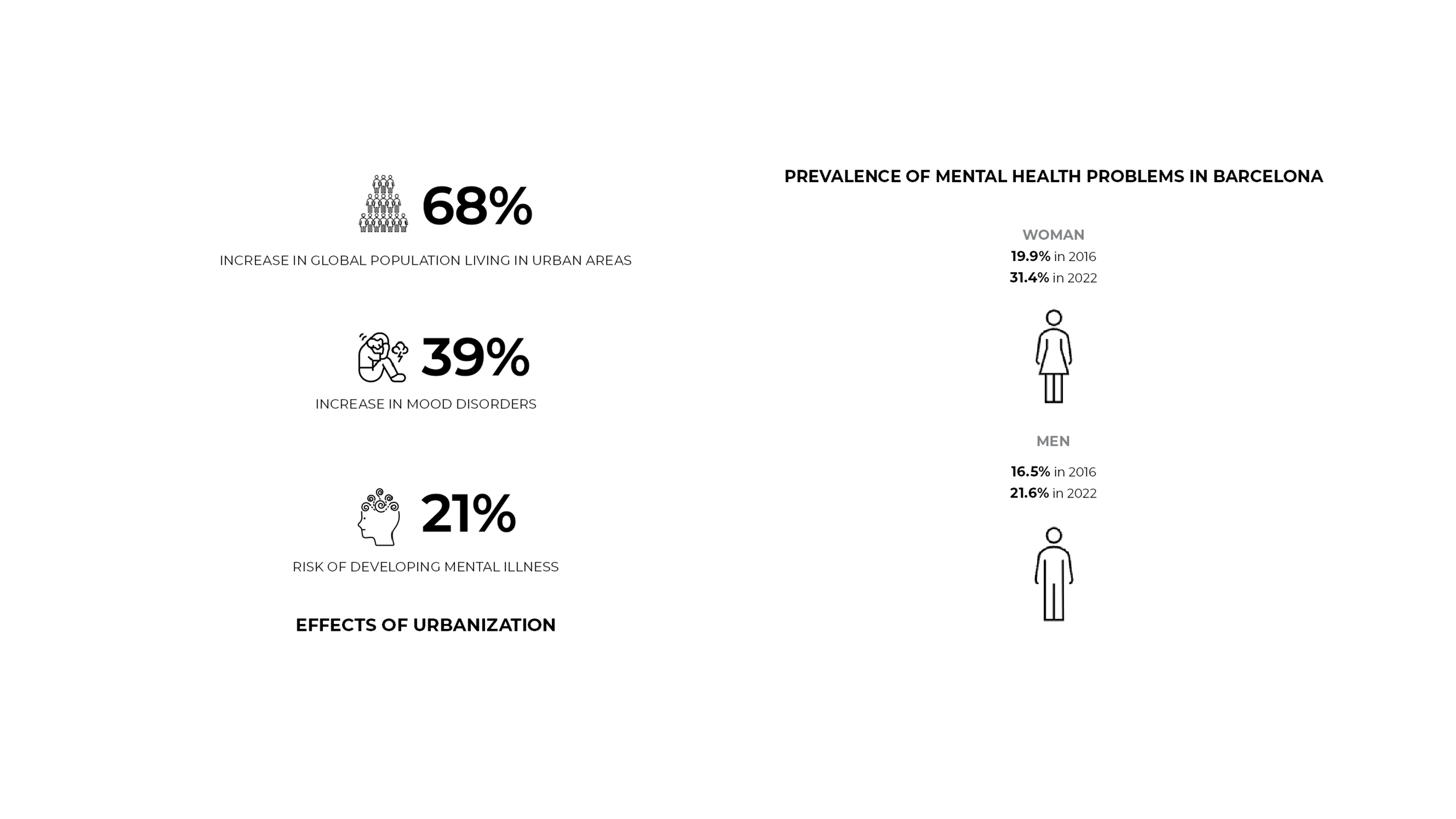

01 SITE ANalysis
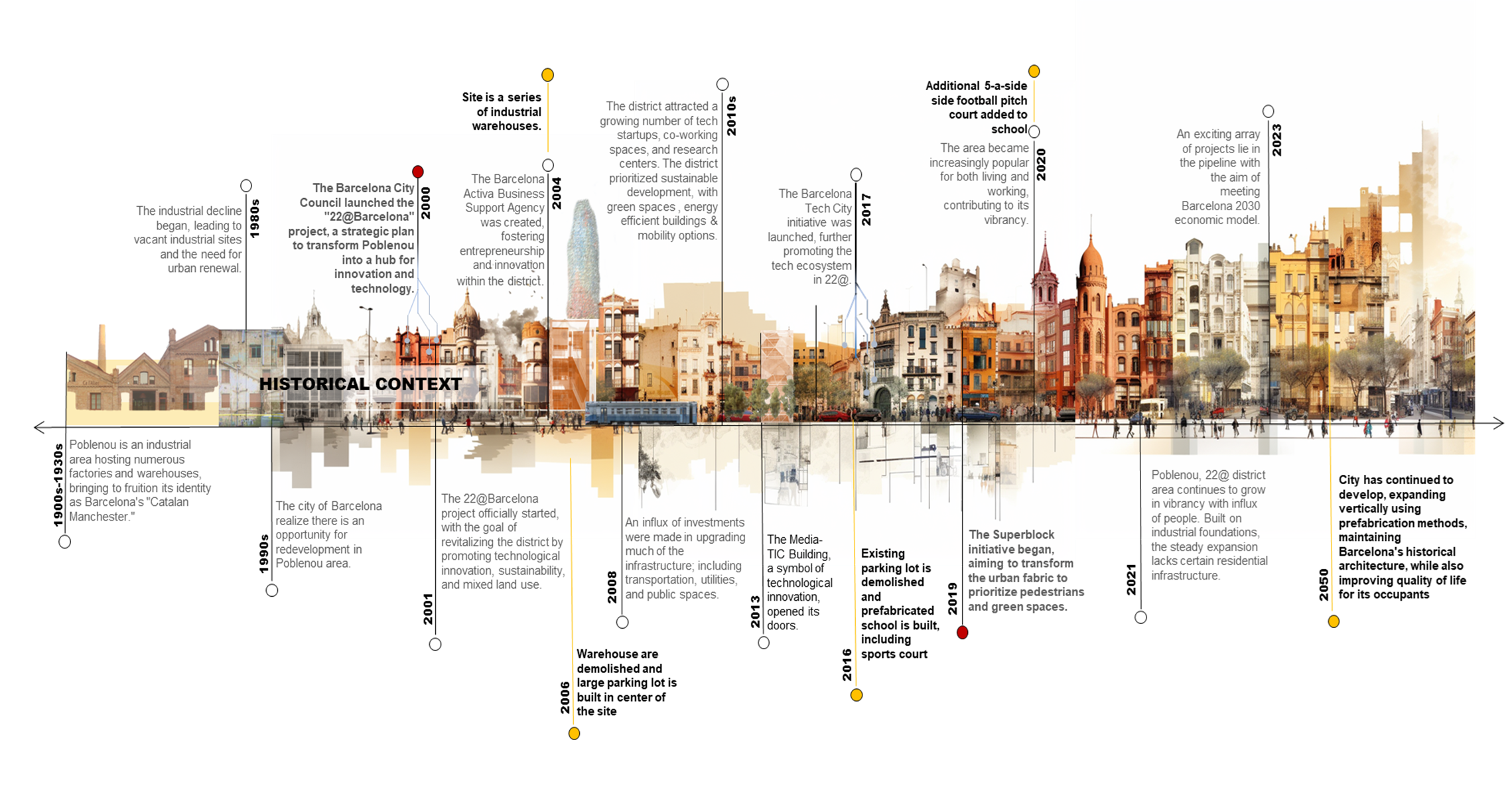







02 phenomenon
MENTAL HEALTH in 2050


The current state and approach to architectural spaces in Barcelona in 2023

METABOLIC DIAGRAM
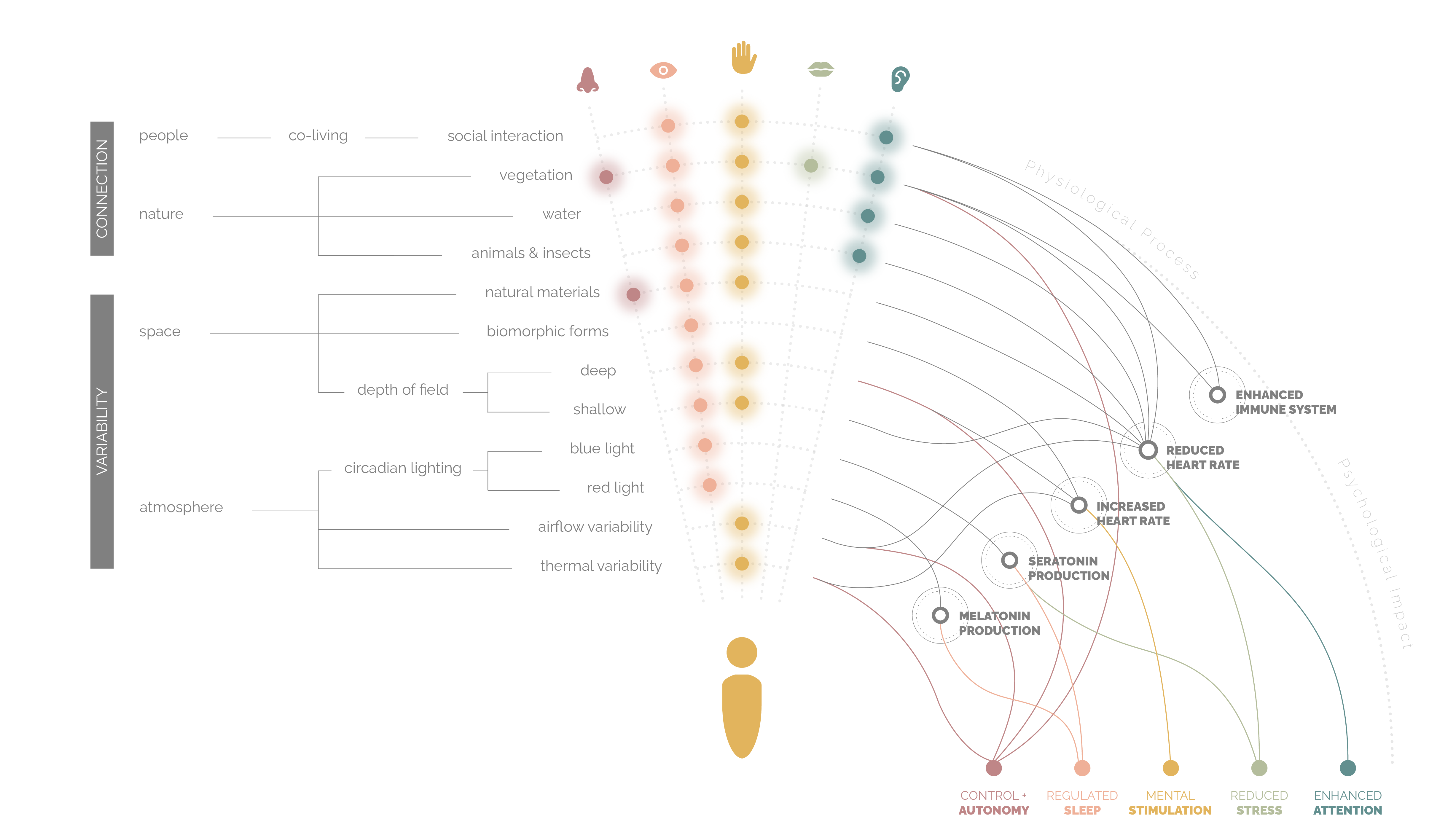

03 PARAMETERS
PATHWAY DISTRIBUTION

TABLE OF ELEMENTS
[A KIT OF PARTS}
The concept of a ‘Table of Elements for Place-Making’ draws inspiration from the periodic table’s ability to showcase infinite possibilities through a limited set of elements. In the realm of prefabrication, co-living, and architecture for the future, envisioning a modular and adaptable list of building components can unlock a myriad of possibilities. Much like the periodic table organizes elements, this approach aims to structure various modules, fostering innovative assemblages. Looking ahead to the year 2050, this methodology can be integral to co-living strategies, contributing not only to efficient and sustainable construction but also to creating living spaces that prioritize mental health and well-being
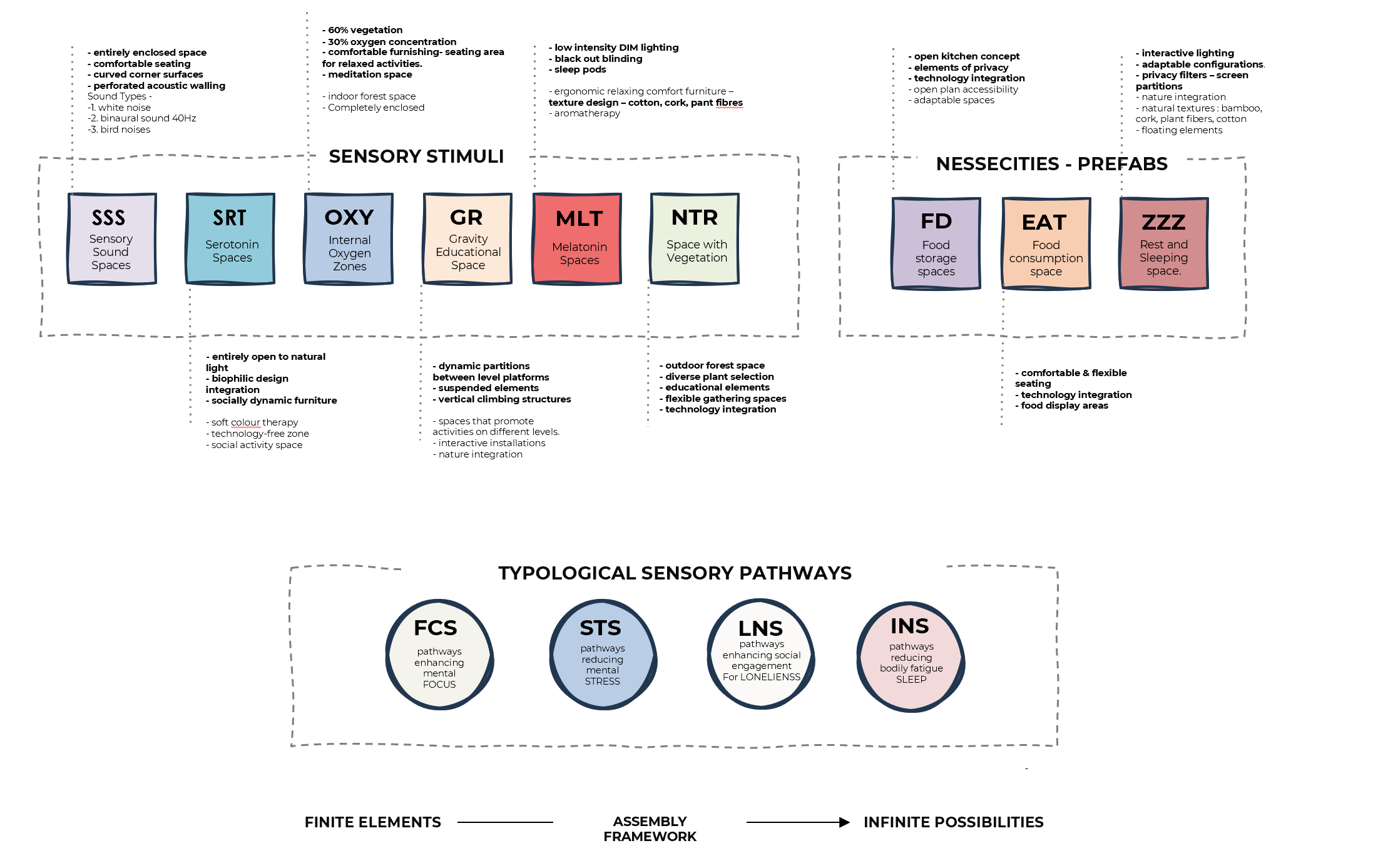

04 DESIGN PROPOSAL
WELLNESS BY DESIGN
AN ARCHITECTURAL SYSTEM FOR OPTIMAL MENTAL WELLBEING
Embracing a parametric and prefabricated approach, this project tackles challenges surrounding mental wellness, through a carefully curated series of sensory stimuli. While recognizing that there is no one-size-fits-all solution to mental health, the design represents a radical approach towards optimizing opportunities for well-being within the urban landscape of 2050. Prioritizing individuality, we achieve this by integrating customizable layouts with partition floors and screens within co-living units, using double volumes and a kit of parts to create completely customizable living spaces. The combination of these living spaces accompanied by sensory stimulated pathways & plazas help foster a seamless integration between communal and private spaces for living.

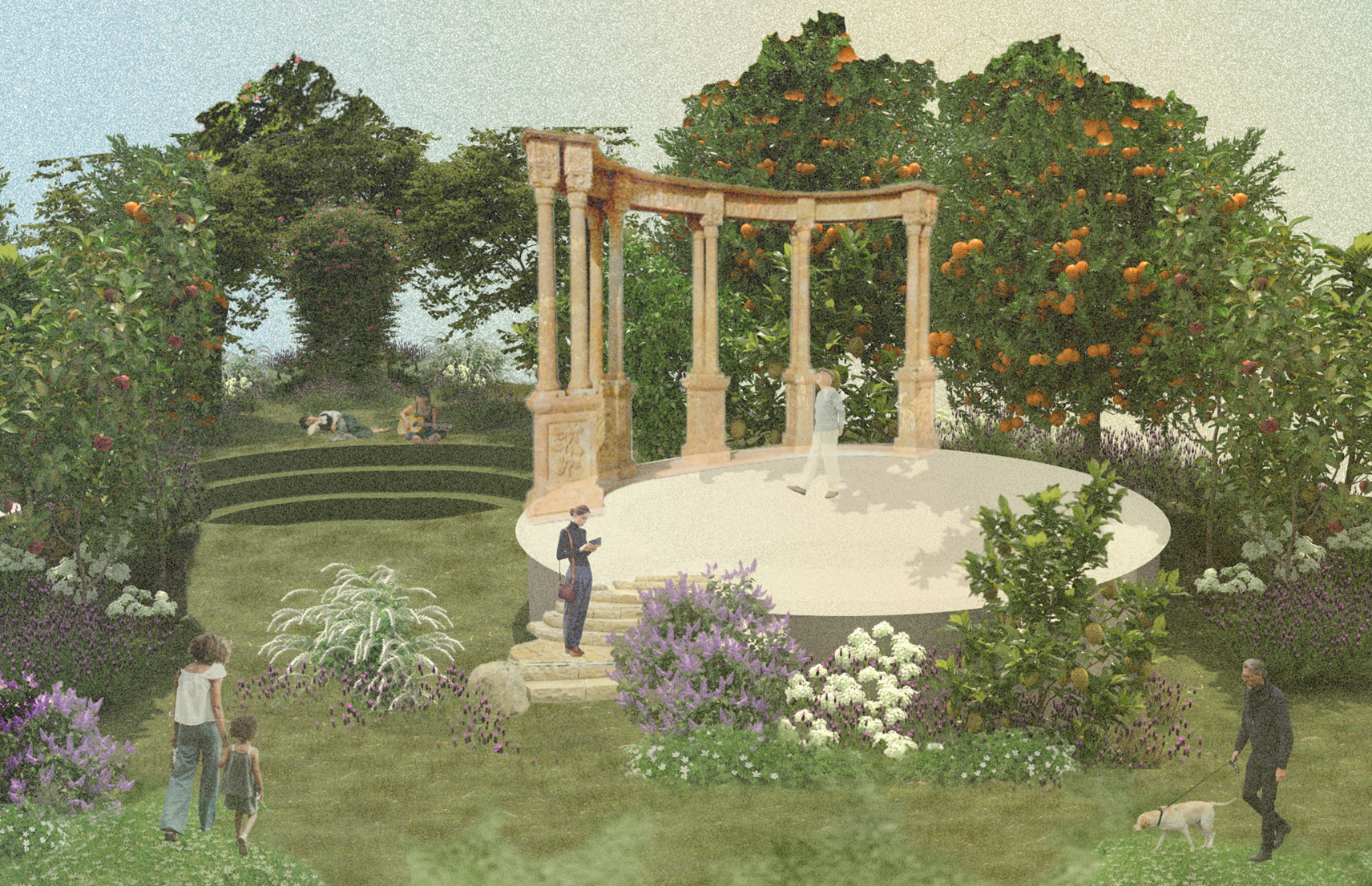




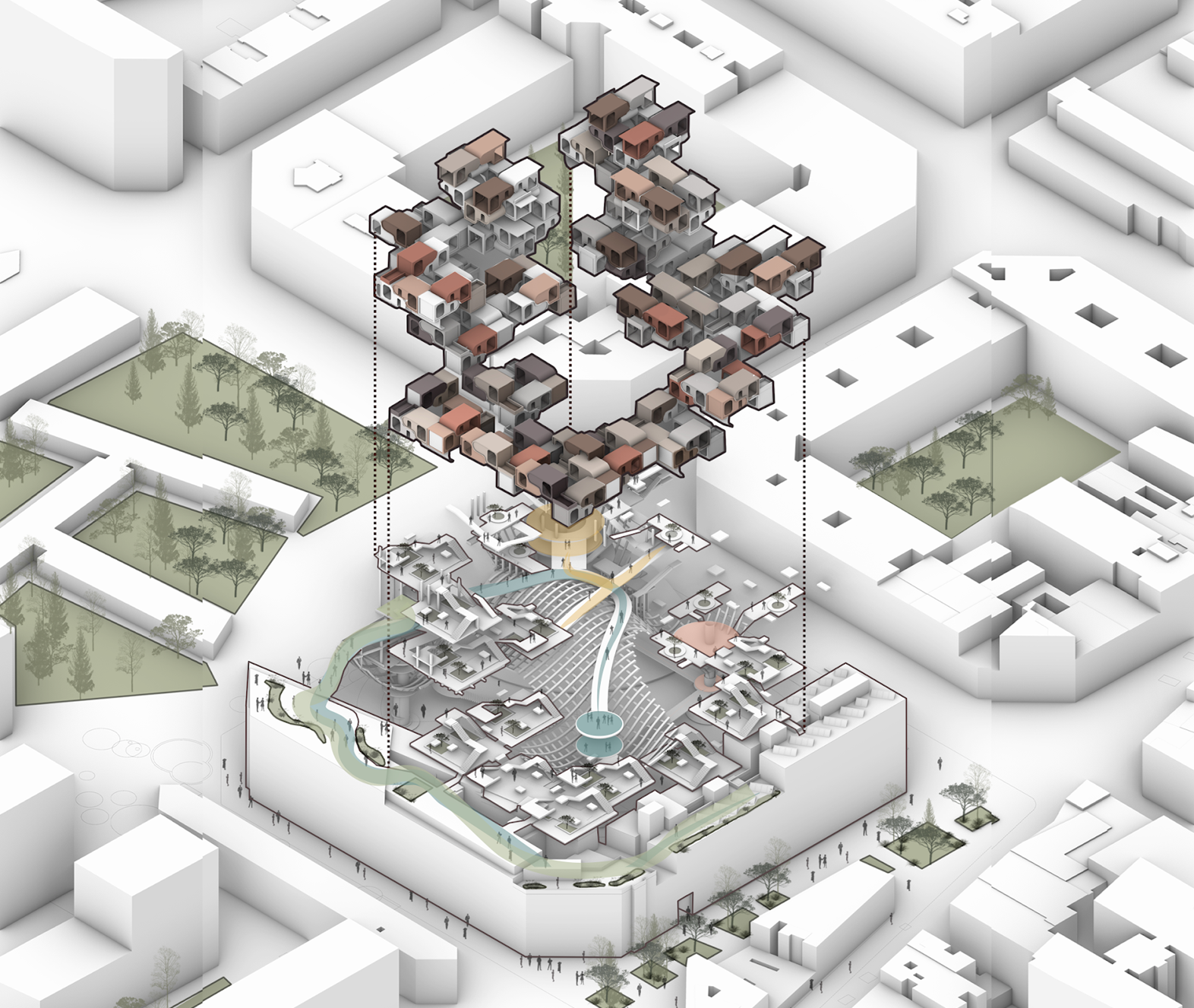
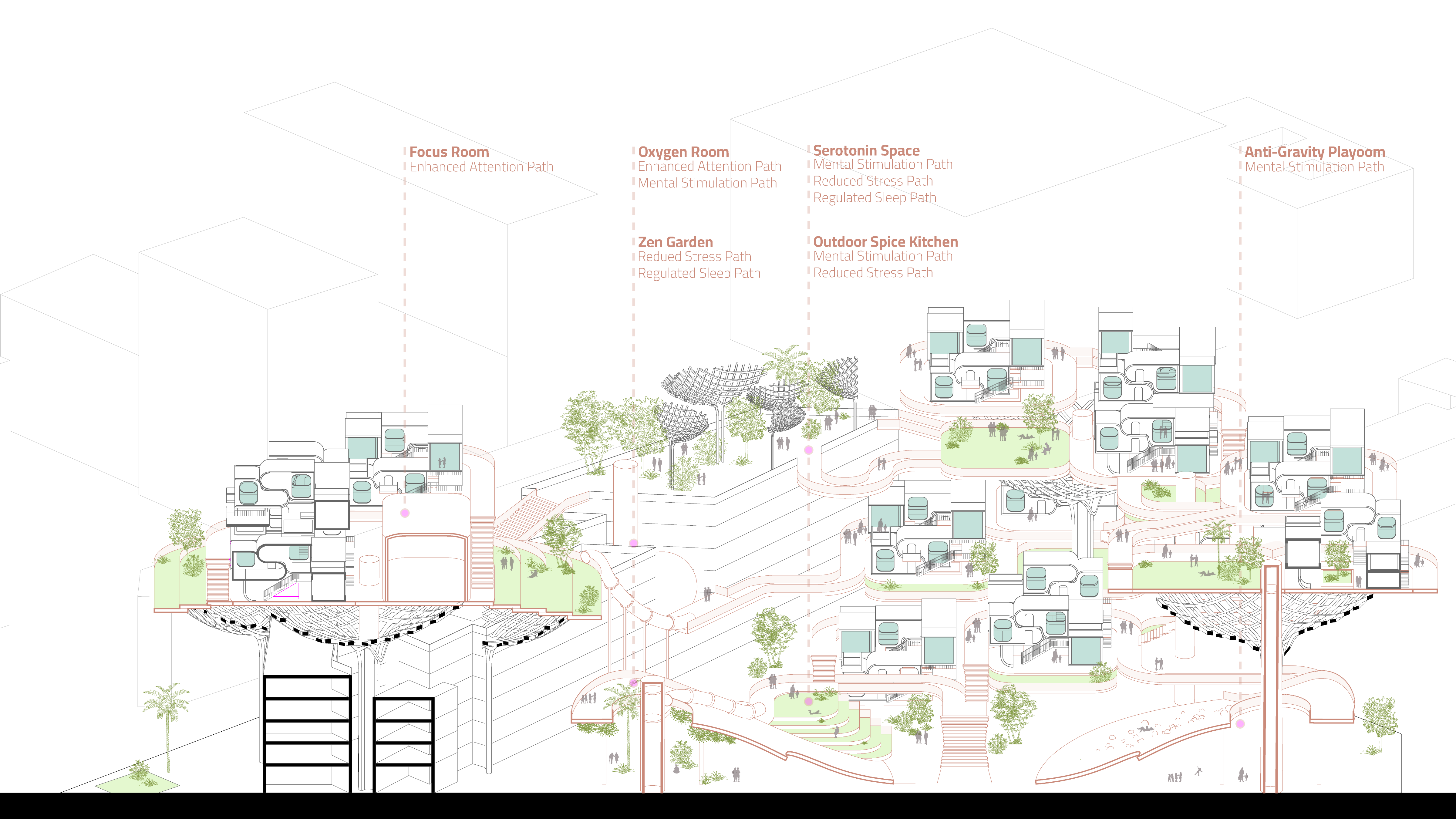

SMART PREFABRICATION APPROACH
A key component which rises through the resolution of mental wellness is our connection to nature, which can be reflected spatially by our depth of field and the height of a ceiling.
Our prefabrication is centred around manipulating the double volume while still maintaining the stacking effect.
Utilising a wall system as structural support for curved floor and an interconnected system of parts, the internal space allows for maximised customisation with the floor and outside wall composed of internal slots for connections. Through this system of customisation, we are able to maximise each occupants sense of individuality, a prominent issue that currently arises in mass produced prefabrication projects.

